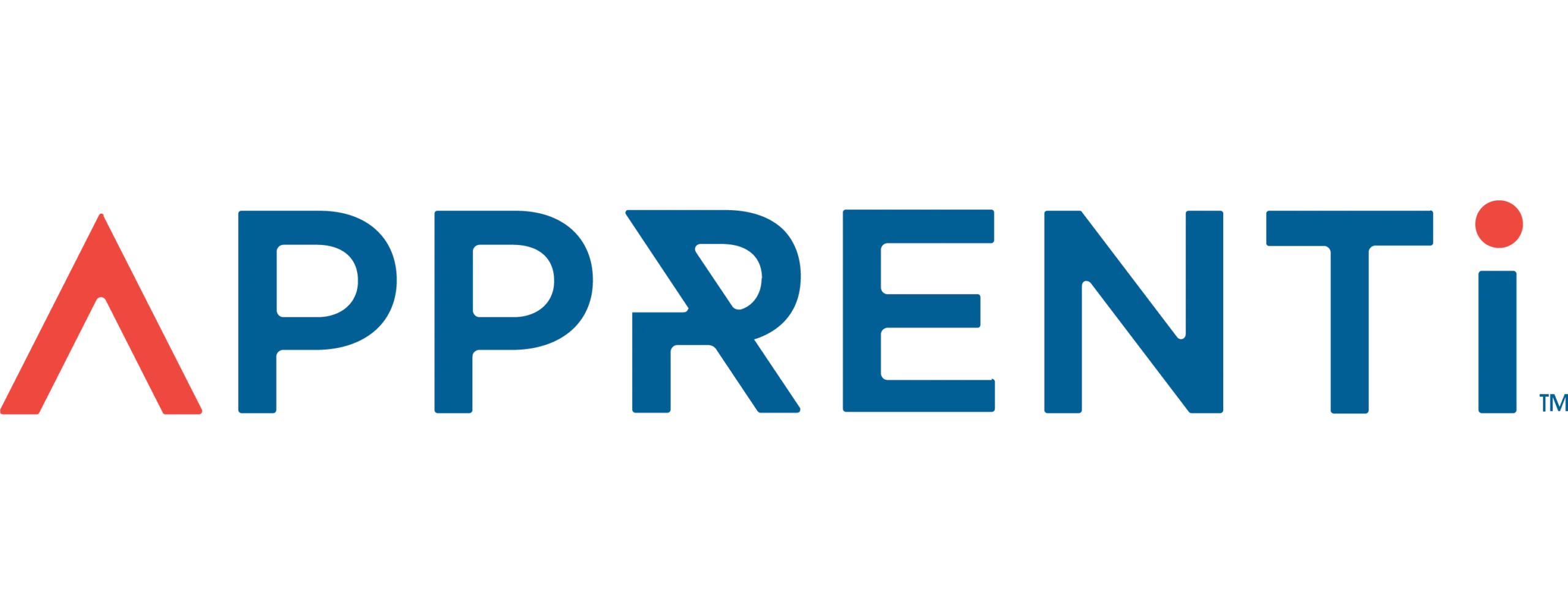Article Summary
- Implement digital tools to streamline your apprenticeship skills tracking and reporting processes effectively.
- Evaluate your current skills tracking methods to identify pain points and opportunities for significant improvement.
- Adopt mobile-first solutions and integrated platforms to enhance apprentice engagement and simplify data management across your programs.
- Design clear skill pathways with defined milestones and custom assessments to build more impactful training programs.
Want to Learn More About Your Registered Apprenticeship Opportunities?
BOOK A FREE CONSULTATION
Let’s Talk About Modern Skills Tracking
Alright, so you’re running multiple apprenticeship tracks. That’s fantastic! You’re already investing in building your future workforce. But let’s be real, managing all that data, especially the crucial skills tracking component, can feel like juggling flaming torches while riding a unicycle if you’re stuck with outdated systems. We’re talking about moving beyond cumbersome spreadsheets and manual check-ins to something far more efficient and insightful. It’s about giving your team, your journeyworkers, and your apprentices the tools they need to succeed, and giving you the visibility to ensure your programs are hitting the mark. This isn’t just about ticking boxes; it’s about truly understanding skill development and program effectiveness.
Set Up Digital Progress Monitoring
Moving to digital progress monitoring means you get a live, transparent view of how each apprentice is advancing. Think dashboards that clearly show completed tasks, competencies achieved, and areas needing more attention. This kind of system allows for proactive interventions rather than reactive fixes. It’s about seeing the journey, not just the destination. Effective skills tracking provides a comprehensive understanding of your workforce’s abilities, helping identify strengths and areas for improvement.
Streamline Performance Documentation
Imagine all performance feedback, OJT hours, and related training records in one accessible place. No more chasing paper trails or deciphering handwritten notes! Streamlined documentation simplifies reviews, supports compliance, and provides a clear, auditable history of each apprentice’s journey. This is crucial for demonstrating program value and for the apprentices themselves to see their growth. Careful monitoring and documenting basic skills outcomes is essential for program success.
Automate Compliance Reports
Compliance reporting can be a headache, right? With modern skills tracking, generating reports for the Department of Labor or other regulatory bodies can be largely automated. The system pulls the necessary data, formats it correctly, and significantly reduces the administrative burden on your HR team. This frees up valuable time to focus on what really matters: developing your talent and closing that skills gap.
Enable Real-Time Data Access
When everyone involved—HR, managers, journeyworkers, and even the apprentices—can access relevant data in real-time (with appropriate permissions, of course), communication improves, and everyone stays on the same page. Apprentices can see their progress, journeyworkers can provide timely feedback, and you get an up-to-the-minute overview of your entire apprenticeship ecosystem. This accessibility fosters a more collaborative and informed training environment.
Pro tip: Start by mapping out your current skills tracking processes, no matter how informal. Identifying what you do now will highlight the biggest opportunities for digital improvement.
Why Do Traditional Methods Fall Short?
If you’re still relying heavily on spreadsheets, shared drives bursting with miscellaneous files, or (dare I say) paper forms for your apprenticeship skills tracking, you’re likely feeling the strain. These traditional methods, while familiar, often create more problems than they solve, especially as your programs scale. It’s like trying to navigate a superhighway using a map from the 1980s: you might get there, but it’ll be slow, frustrating, and you’ll likely miss some critical turns.
Let’s face it—these old ways just weren’t built for the dynamic needs of modern workforce development. They limit visibility, slow down reporting, and make it harder to adapt quickly. To truly support your apprentices and meet compliance demands, you need more innovative systems designed for the complexity of today’s programs.

Identify Common Pain Points
What are the usual suspects when it comes to manual skills tracking? Let’s see if these sound familiar:
- Data silos: Information is scattered, making a holistic view nearly impossible.
- Inconsistency: Different managers might track progress in different ways, leading to apples-and-oranges comparisons.
- Lack of real-time visibility: You often don’t know where an apprentice truly stands until a formal review period.
- Reporting nightmares: Compiling data for compliance or internal review is a time-consuming, manual slog.
- Scalability issues: What worked for 5 apprentices breaks down completely with 50 or 500.
Calculate Time Lost Manual
Think about the hours your team spends manually inputting data, chasing down missing information, collating reports, and trying to reconcile discrepancies. It’s not just an inconvenience; it’s a significant drain on resources. Some companies find that manual skills mapping and tracking can take as long as a year! This is time that could be spent on strategic initiatives, like program improvement or expanding your apprenticeship offerings. That lost time translates directly into lost productivity and opportunity cost. It’s a cycle that keeps your HR team bogged down in administrative tasks instead of focusing on talent development.
Reveal Hidden Costs
The direct costs of paper, printing, and storage might seem small, but the indirect costs of manual skills tracking are often much larger. These include:
- Errors and inaccuracies leading to compliance risks or poor decision-making.
- Reduced apprentice engagement due to lack of clarity or slow feedback.
- Difficulty in demonstrating ROI for your apprenticeship programs.
- Missed opportunities to identify and address skills gaps proactively. These hidden costs can significantly impact your bottom line and the overall effectiveness of your talent development strategy.
Pro tip: Survey your journeyworkers and HR staff involved in apprenticeships. Ask them about their biggest time-sinks and frustrations with the current skills tracking process. Their answers will be gold.
Here’s How Smart Tracking Transforms Training
Now for the good part! Moving to a smart, digital approach for skills tracking isn’t just about fixing the old problems; it’s about unlocking new possibilities for your apprenticeship programs. Imagine a system that works for you, not against you, making everyone’s life easier and your programs more impactful. This is where technology truly shines, helping to create a more dynamic, responsive, and effective learning environment. We’re talking about a fundamental shift in how you manage and grow your talent pipeline. For more on our approach, you can connect with us on LinkedIn.
Deploy Mobile-First Solutions
In today’s world, apprentices are digital natives—which means your tools need to meet them where they are. Mobile-first platforms for skills tracking, learning access, and mentor communication make it easier for apprentices to stay engaged, log OJT hours on the go, and monitor their own progress. It’s about convenience, empowerment, and keeping learners connected to their goals. When apprentices feel supported by intuitive tools, their confidence and completion rates increase.
At the same time, a centralized skills tracking database supports program efficiency. It gives admins real-time visibility, simplifies resource planning, and ensures training outcomes align with industry needs. It also helps identify skill gaps early, allowing for timely adjustments and personalized support. In short, it keeps both learners and programs on track for success.

Connect Multiple Stakeholders
A dedicated platform can bring all your apprenticeship stakeholders—employers, sponsors, RTI providers, journeyworkers, and apprentices—together in one unified system. The Apprenticeship Management Platform from GoSprout, for example, is a SaaS, cloud-based tool designed to do just that, simplifying how on-the-job training and related instruction are assigned and tracked, while also making compliance a breeze. This interconnectedness ensures everyone has the information they need, fostering better collaboration and a shared understanding of program goals and progress. It’s about teamwork making the dream work, amplified by technology.
Track Skills Development
Modern systems allow for granular skills tracking. You can define specific competencies for each role, map them to training activities, and monitor an apprentice’s development against these benchmarks. This detailed view helps identify individual strengths and weaknesses, allowing for personalized learning paths. This focus on building capabilities is crucial, especially when organizations want to scale operations or adopt new technologies. It’s not just about hours logged; it’s about actual skills gained.
Measure Learning Outcomes
With robust data collection and analytics, you can move beyond simple completion rates to truly measure learning outcomes. Are your apprentices mastering the critical skills needed for their roles? Which training modules are most effective? Smart skills tracking provides the data-backed insights needed to answer these questions, continuously improve your programs, and demonstrate their value to the organization. This data-driven approach ensures your apprenticeships are delivering real results.
Pro tip: When evaluating solutions, look for systems that offer robust reporting and analytics. The ability to customize reports to your specific KPIs is invaluable for demonstrating program success.
Let’s Build Better Training Programs
Effective skills tracking is powerful, but it becomes even more impactful when integrated into a well-designed training program from the start. It’s not just about monitoring progress—it’s about building a clear, intentional roadmap for apprentice success. When programs are structured around both skills development and tracking, they become more engaging, more practical, and ultimately more effective. Apprentices can see how each task connects to a broader goal, which increases motivation and retention.
This proactive approach ensures that apprentices aren’t just completing checklists—they’re actually mastering the competencies needed for real-world success. By embedding skills tracking into your program design, you create a feedback loop that continuously improves both learning outcomes and program quality. Understanding why apprenticeships are such a powerful workforce model can help ground and inspire these design choices.

Design Clear Skill Pathways
What does success look like for an apprentice in each role? Defining clear skill pathways is the first step. This involves:
- Identifying core competencies for each apprenticeship.
- Breaking down competencies into measurable skills and tasks.
- Sequencing skills logically to build from foundational to advanced. This clarity helps apprentices understand what’s expected and how they’ll get there. It’s like giving them a GPS for their career journey. A focus on building capabilities played out in a Middle Eastern city whose leaders wanted it to become a tech-driven, knowledge-based economy, requiring them to identify critical roles and capabilities.
Implement Progress Milestones
Breaking down the overall apprenticeship into manageable milestones with clear deliverables keeps apprentices motivated and provides regular checkpoints for assessment. These milestones can be tied to specific skill achievements, project completions, or phases of training. Celebrating these achievements, big or small, reinforces progress and helps maintain momentum. The Apprentice App from GoSprout is designed to support this, putting everything an apprentice needs to understand their tasks, get feedback, and track progress towards graduation right in their hands.
Create Custom Assessments
How will you know if an apprentice has truly mastered a skill? Generic tests often fall short. Developing custom assessments—whether practical demonstrations, project-based evaluations, or scenario-based challenges—aligned with your specific skill pathways provides a much more accurate measure of competency. This ensures your apprentices are not just learning theory but can apply their knowledge in real-world contexts. This is where services like GoSprout’s Course Development can be invaluable, as our team develops custom courses for employers who want to enhance their programs with tailored assessment strategies.
Pro tip: Involve your experienced journeyworkers in designing skill pathways and assessments. Their practical expertise is crucial for ensuring the training is relevant and effective.
Here’s What Successful Implementation Looks Like
Making the switch to a modern skills tracking system is a big step—but one that’s absolutely worth taking. Like any change, it requires thoughtful planning and clear execution. But don’t worry—it’s doable, and when implemented well, the transition is smoother than most expect. The key is to align your team, onboard apprentices effectively, and make sure everyone understands how the system supports their goals.
When the right tools are in place, the benefits of streamlined, real-time skills tracking become obvious fast. You’ll gain better visibility, reduce administrative stress, and create a more structured learning environment. It’s about setting everyone—HR, mentors, and apprentices—up for success from day one. And if you’re exploring different workforce pathways, it’s helpful to compare how apprenticeships vs. internships are structured, as both benefit from consistent and transparent tracking systems.

Plan Your Digital Transition
A successful rollout starts with a solid plan. Key considerations include:
- Defining clear objectives: What do you want to achieve with the new system?
- Data migration: How will existing apprentice data be moved to the new platform?
- Integration: Will the new system need to connect with other HR software?
- Timeline: Set realistic milestones for each phase of the implementation.
- Stakeholder communication: Keep everyone informed about the changes and benefits. Thorough planning minimizes disruption and ensures a smoother adoption process. Forward-thinking organizations understand that talent management is a critical component of business success and use strategic workforce planning to stay ahead.
Train Your Team
Your HR staff, managers, and journeyworkers will be key users of the new skills tracking system. Comprehensive training is essential to ensure they are comfortable and proficient with its features. This isn’t just about showing them how to click buttons; it’s about helping them understand how the system supports their roles and improves the apprenticeship program. Consider different training formats, like workshops, Q&A sessions, and readily available support materials. For a deeper dive into how to structure these programs, GoSprout’s Workforce Planning & Consulting services can be a game-changer, as our team helps employers understand all facets of apprenticeships, including the resources and incentives available.
Launch With Confidence
Once your plan is in place and your team is trained, it’s time to launch. You might consider a phased rollout, starting with one or two apprenticeship tracks, or a full launch if you’re feeling bold. Whatever your approach, ensure you have support mechanisms in place for any initial questions or troubleshooting. Celebrate the launch – it’s a positive step forward for your organization and your apprentices!
Monitor Early Results
After launch, keep a close eye on how the system is being used. Gather feedback from users, track key metrics, and identify any areas for refinement. Early monitoring helps you address any teething problems quickly and ensures you’re maximizing the value of your new skills tracking capabilities. This continuous improvement mindset is key to long-term success.
Pro tip: Designate a ‘super-user’ or champion within each department or for each major apprenticeship track. These individuals can provide first-line support and encourage adoption among their peers.
Conclusion: Skills Tracking Simplified for Success
So, what’s the big takeaway here? Managing multiple apprenticeship tracks doesn’t have to feel like an administrative black hole, especially when it comes to skills tracking. By moving away from those clunky, manual methods and embracing modern, digital solutions, you’re not just making life easier for your HR team but fundamentally enhancing the quality and impact of your apprenticeship programs.
Think about it: real-time data, streamlined compliance, engaged apprentices, and insightful analytics all working together. This is about transforming your approach to workforce development, making it more agile, transparent, and effective. Many employers are discovering these benefits.

The beauty of a dedicated platform is its ability to centralize everything, providing a single source of truth for all stakeholders. This clarity empowers everyone involved, from the apprentice just starting their journey to the HR executive overseeing the entire talent pipeline. It fosters a culture of continuous improvement, allowing you to identify what’s working, what’s not, and make data-driven decisions to optimize your training investments. Ultimately, simplified skills tracking means you can focus more on developing the skilled workforce your company needs to thrive and less on chasing paperwork. It’s about working smarter, not harder, to close the skills gap and build a brighter future for your apprentices and your organization. This is particularly true for apprenticeships for SMBs where resource efficiency is paramount.
Pro tip: Regularly review your skills tracking data with program managers and journeyworkers. Use these insights to collaboratively identify areas for program enhancement and to celebrate successes.
Conclusion
Ultimately, embracing modern skills tracking is about future-proofing your talent pipeline. At GoSprout, we’re passionate about making apprenticeship management simple and effective, because we believe in the power of work-based learning to transform lives and businesses. We’re here to help you navigate the complexities, leverage technology, and build apprenticeship programs that truly deliver.
Our goal is to empower you to develop the skilled workforce you need, fostering equity and opportunity along the way. Let’s work together to close our nation’s talent gap. We invite you to learn more about how GoSprout can support your apprenticeship initiatives and help you achieve your workforce development goals.
Frequently Asked Questions
- Q: What’s the biggest advantage of digital skills tracking over manual methods for a large HR department?
- A: The biggest advantages are significantly reduced administrative burden through automation, real-time visibility into all apprentice progress, and consistent data for compliance and strategic decision-making across multiple programs.
- Q: How can modern skills tracking improve apprentice engagement?
- A: Modern systems, especially mobile-first ones, provide apprentices with clear visibility into their progress, learning paths, and feedback. This transparency and ease of access empower them and keep them more engaged in their development.
- Q: We have very specific compliance requirements. Can a skills tracking platform adapt to those?
- A: Yes, robust apprenticeship management platforms are designed with compliance in mind and often allow for customization of reporting and data tracking to meet specific regulatory needs, such as those from the Department of Labor.
- Q: How difficult is it to transition from our current spreadsheet-based system to a dedicated skills tracking platform?
- A: With proper planning, data migration support, and user training, the transition can be managed effectively. Many platform providers offer implementation support to make the process smoother for your team.
- Q: Can skills tracking help us identify future leaders within our apprenticeship programs?
- A: Absolutely. By tracking not just task completion but also the development of specific leadership competencies and problem-solving skills, you can identify high-potential apprentices early on.















